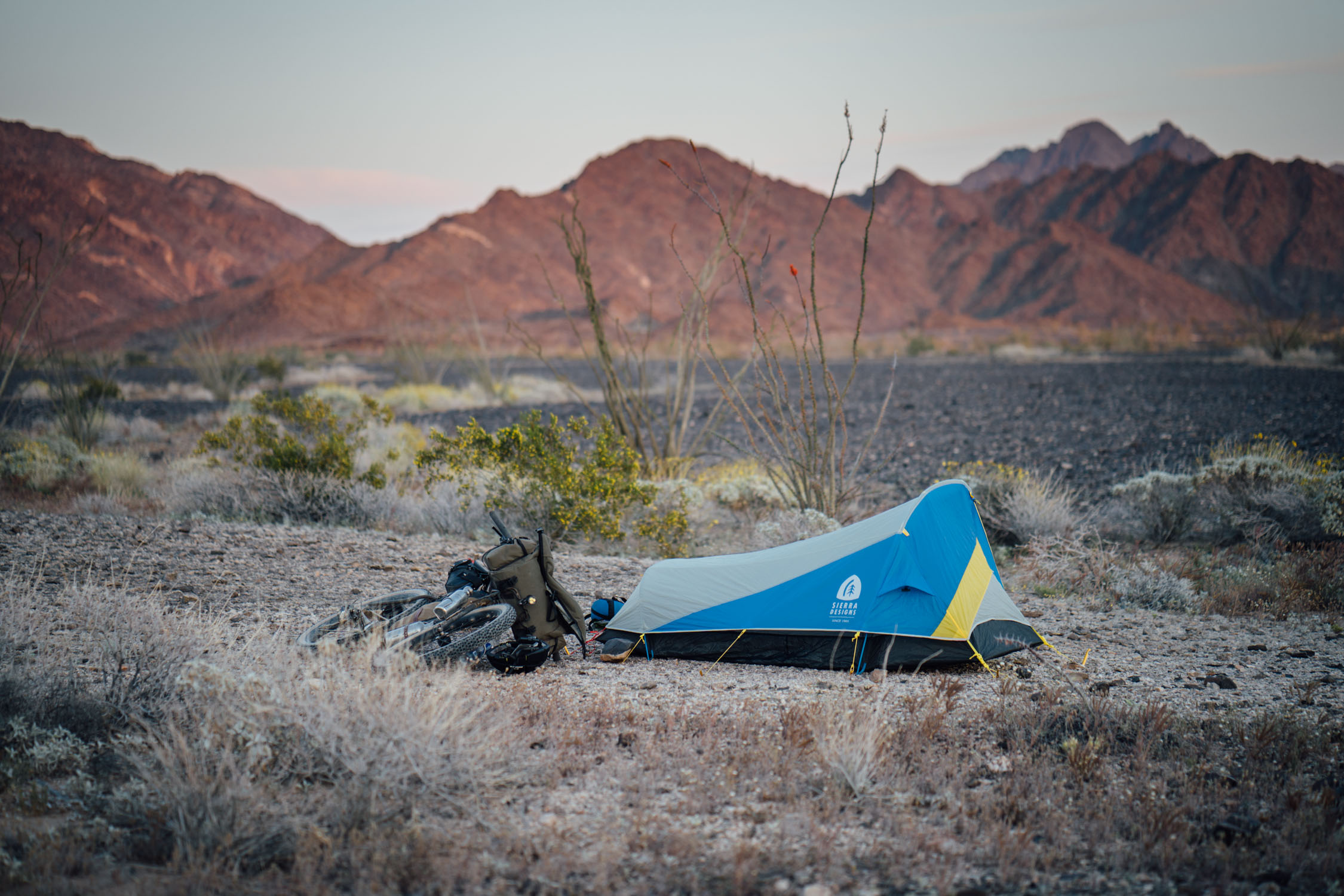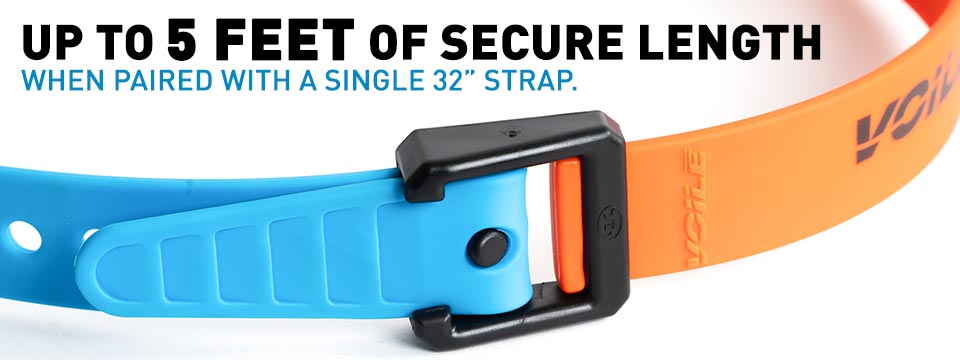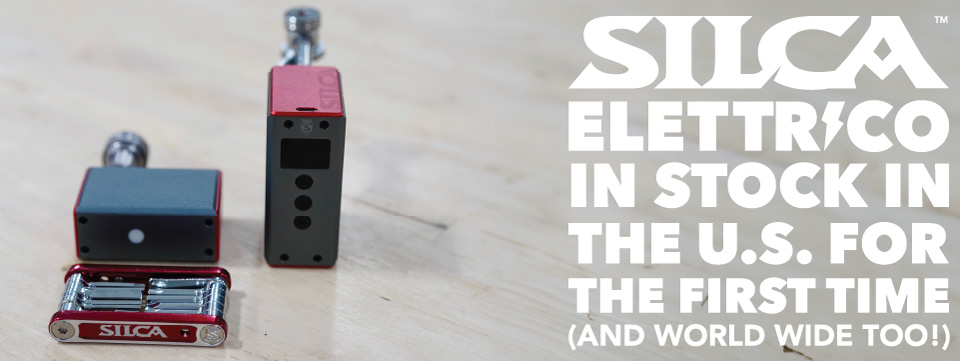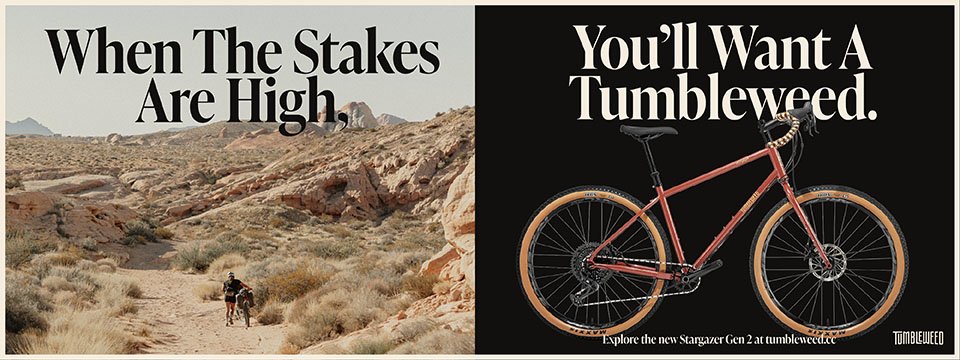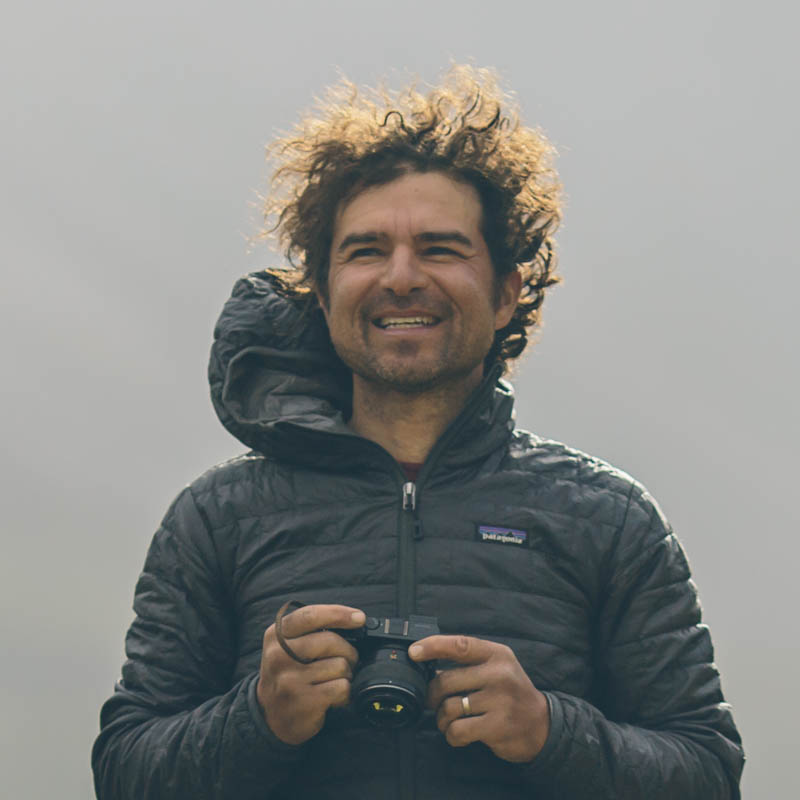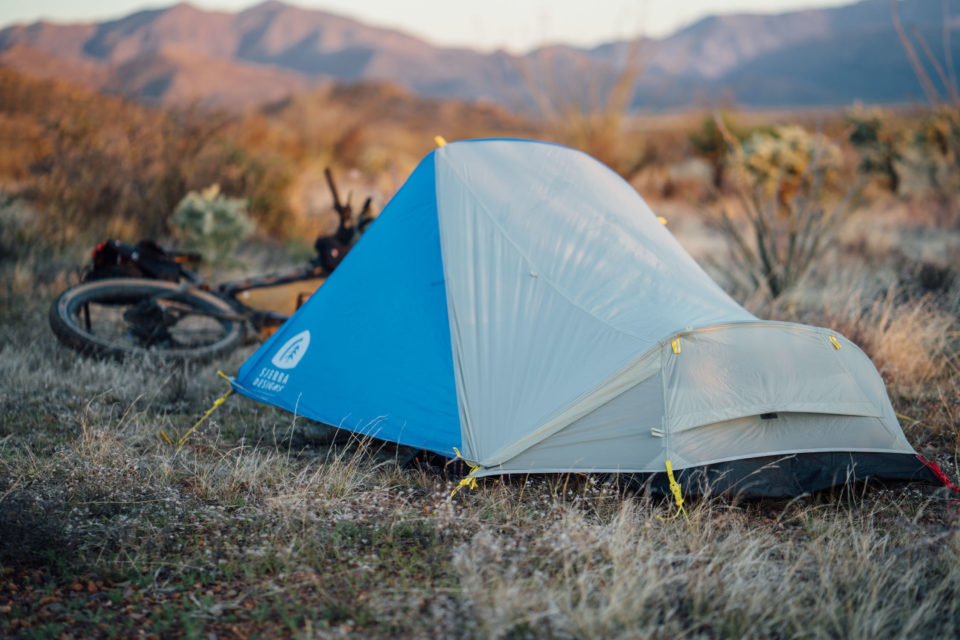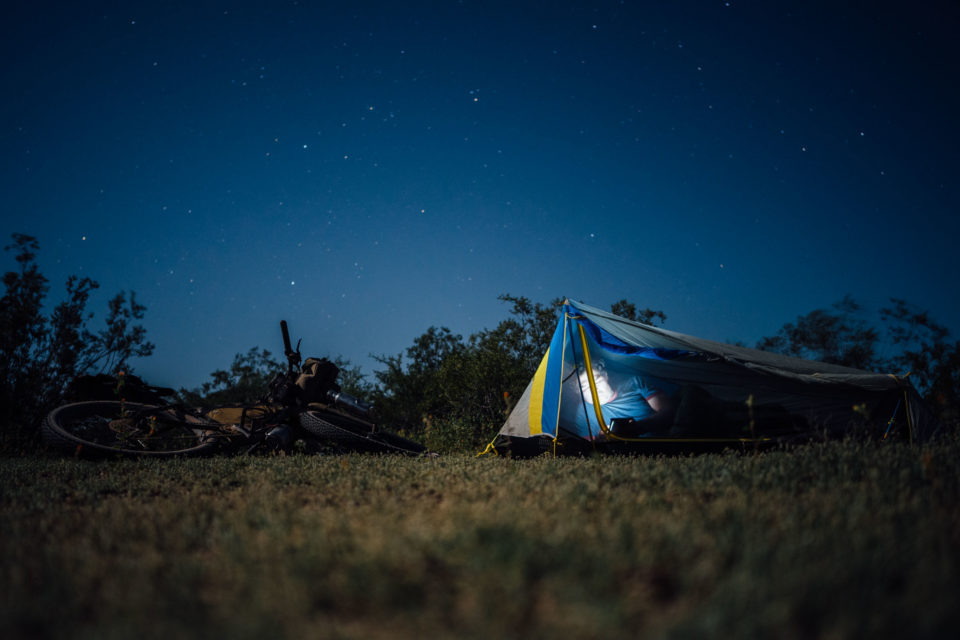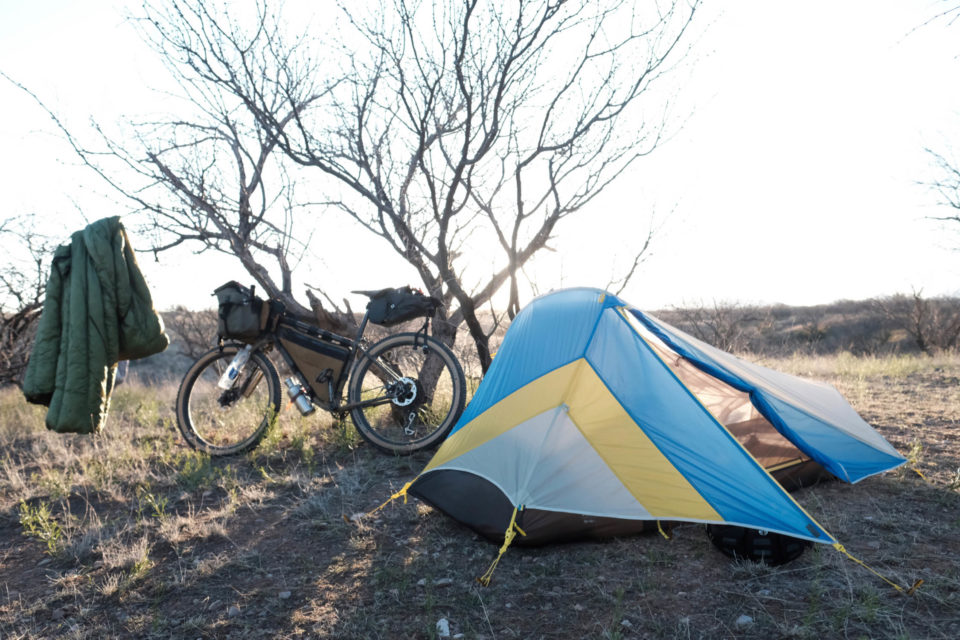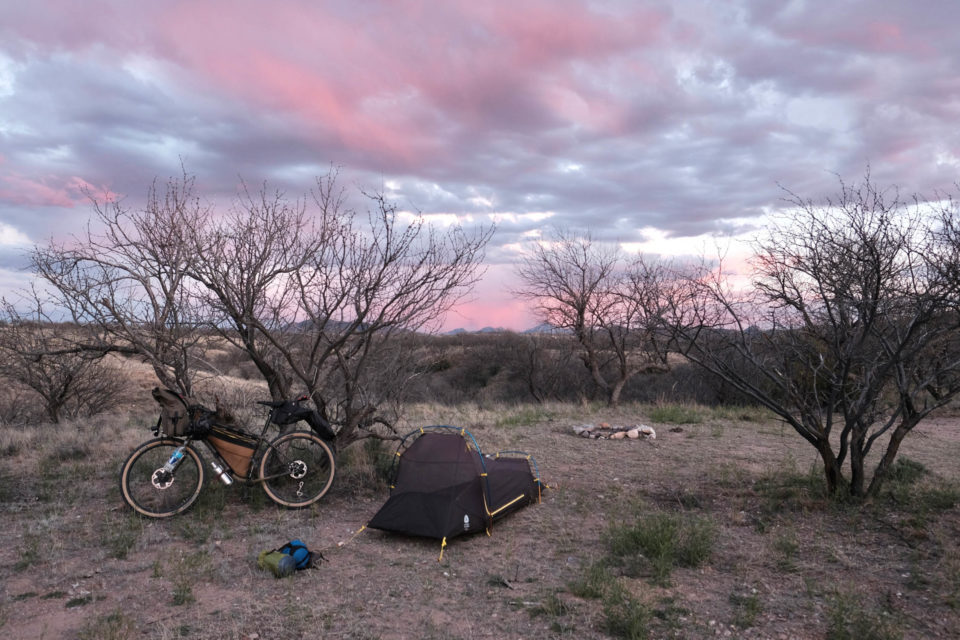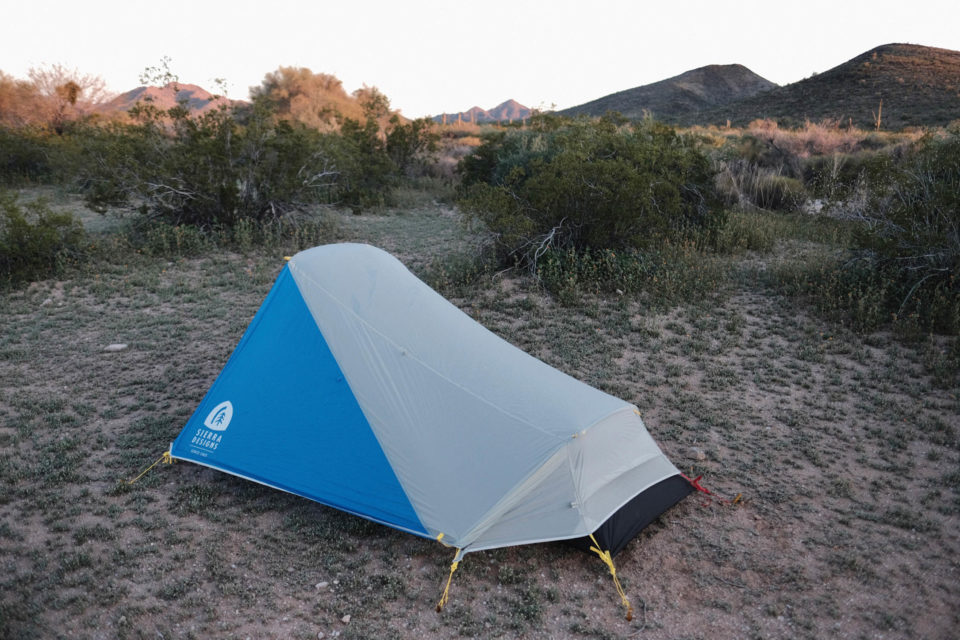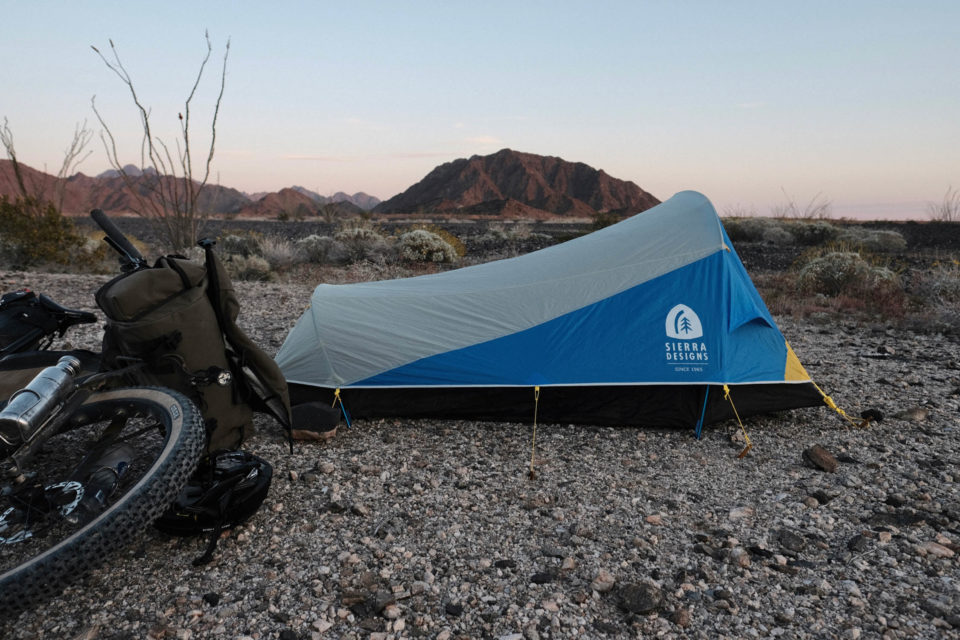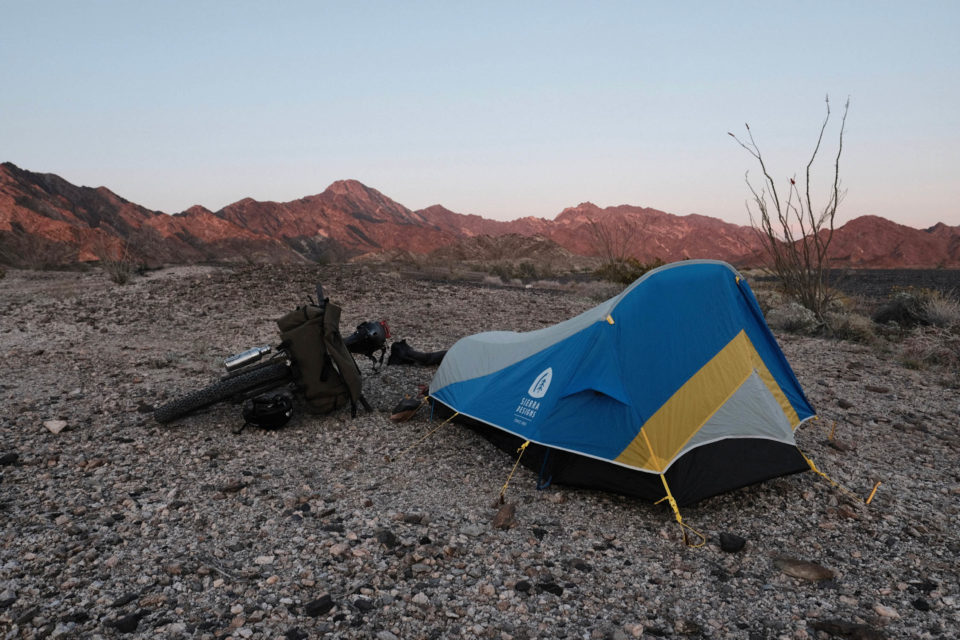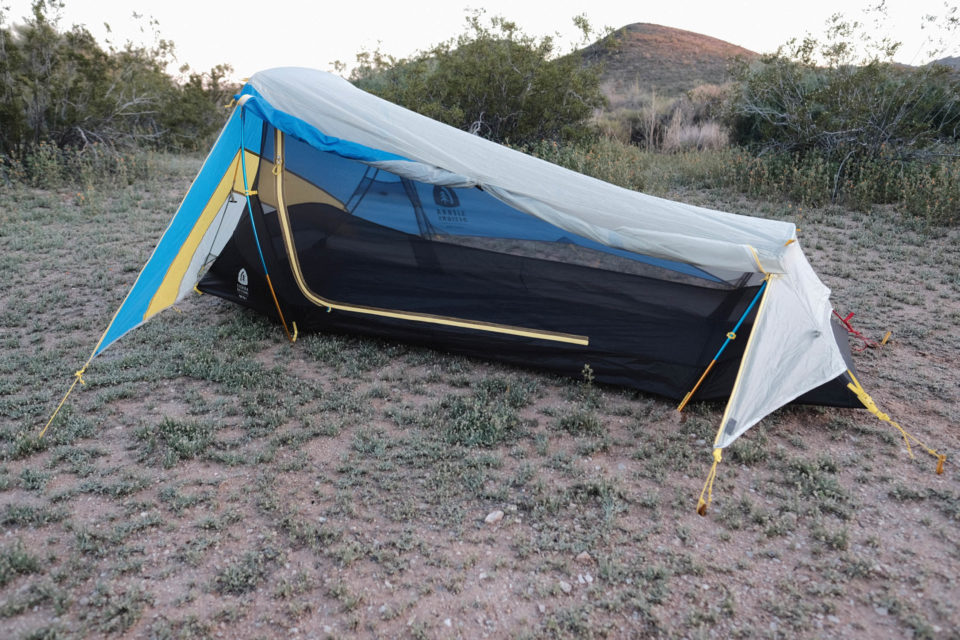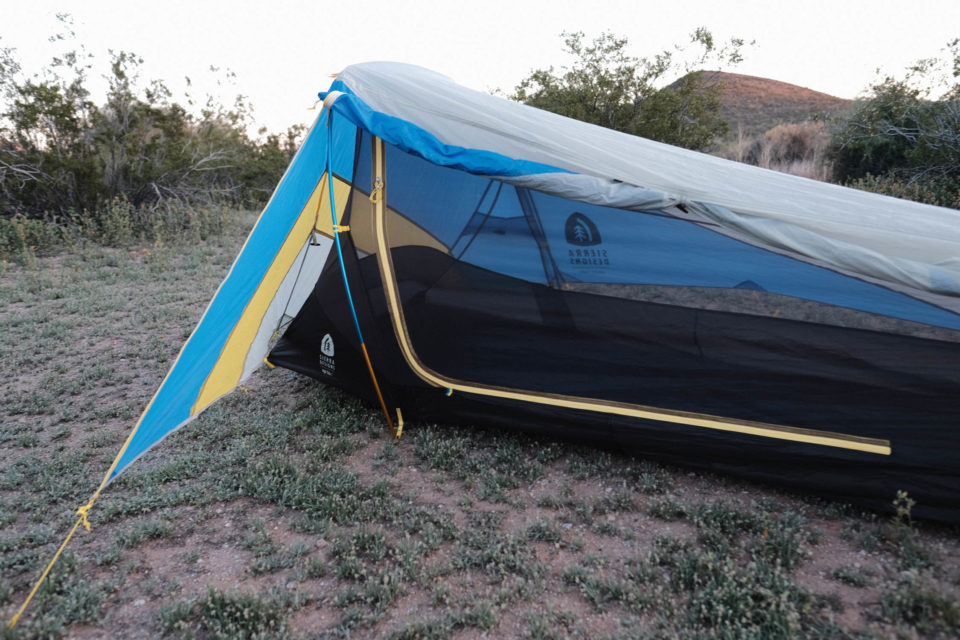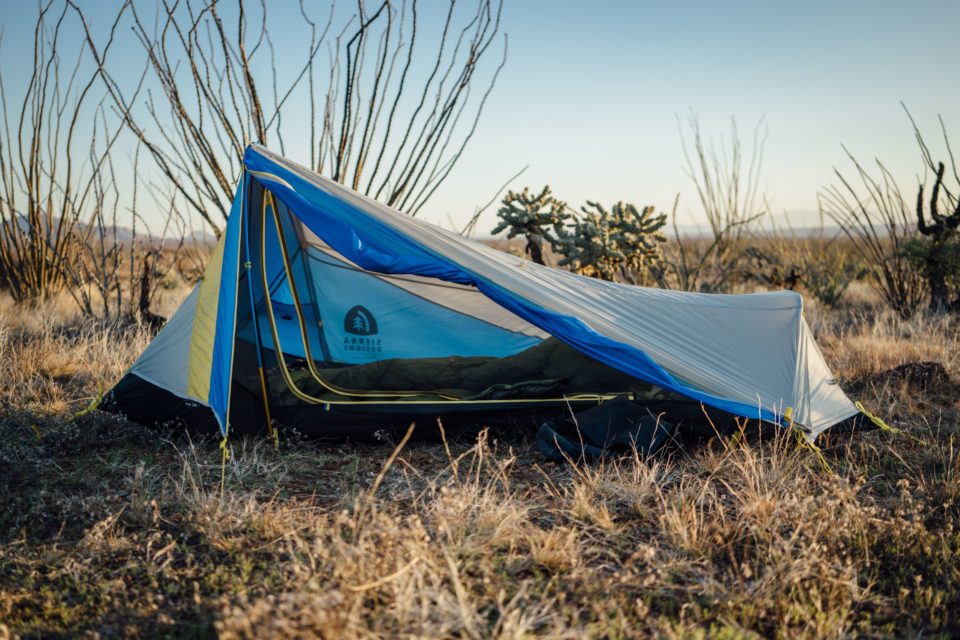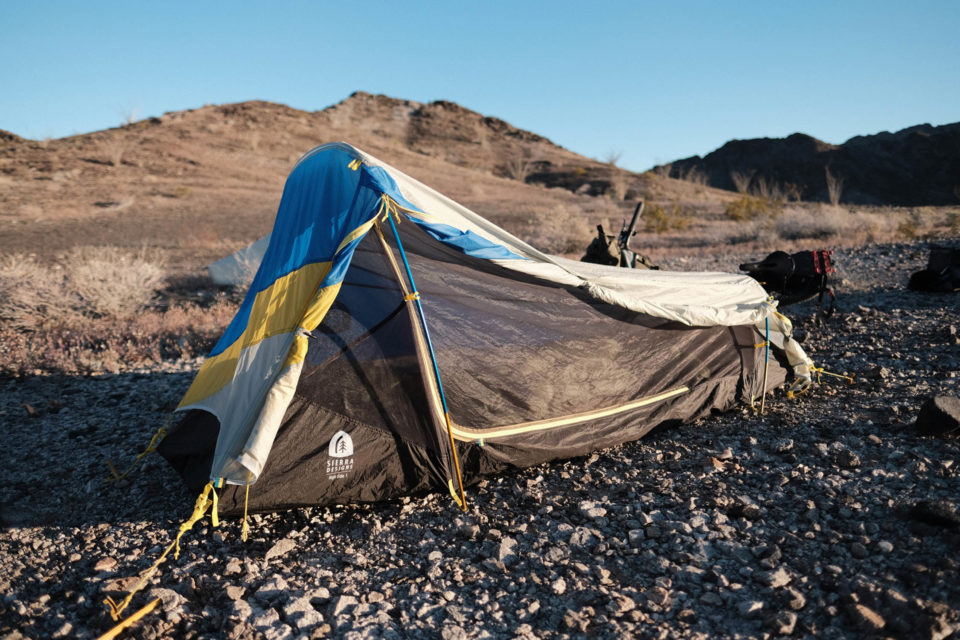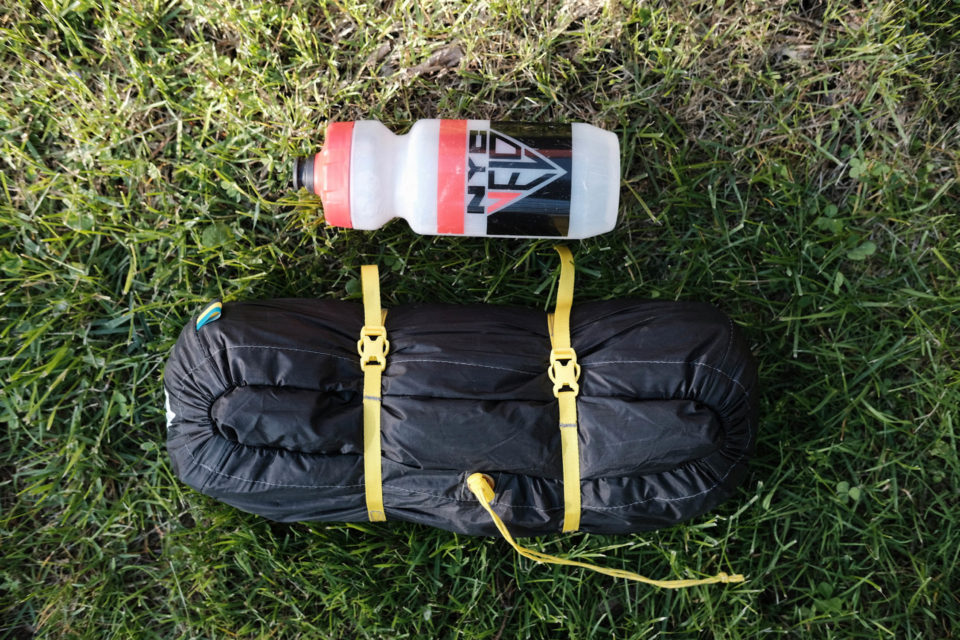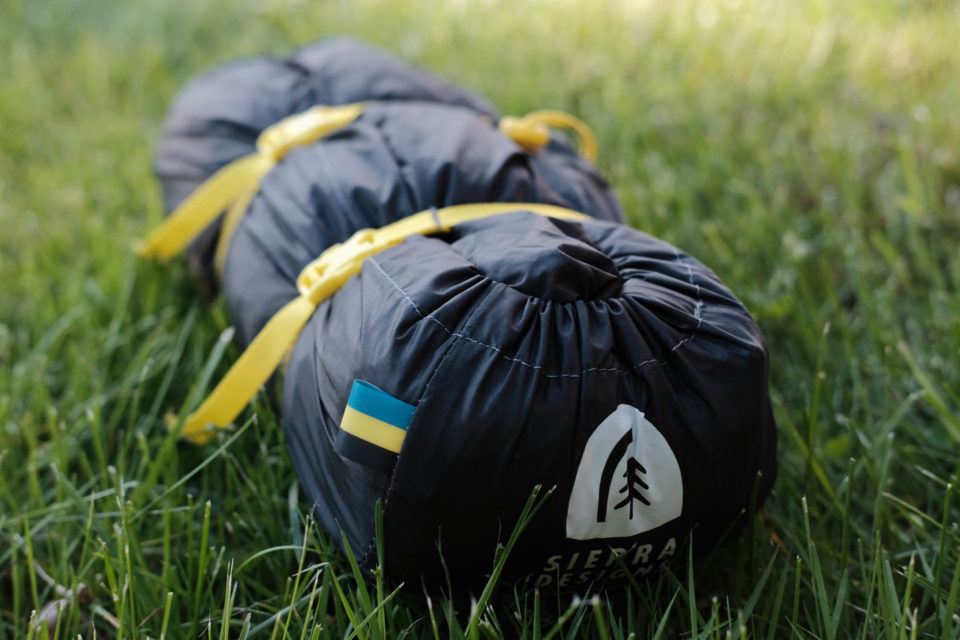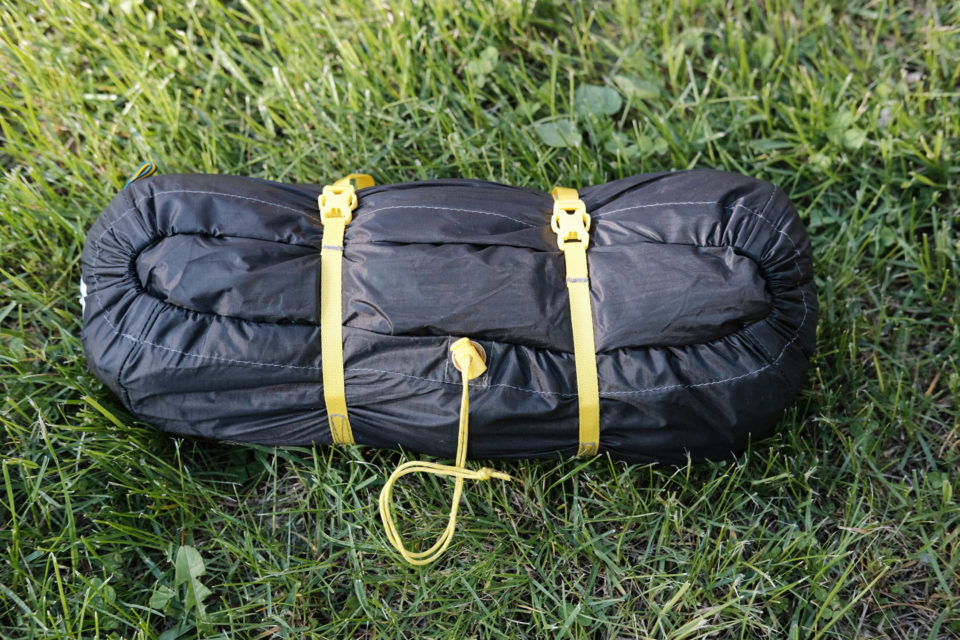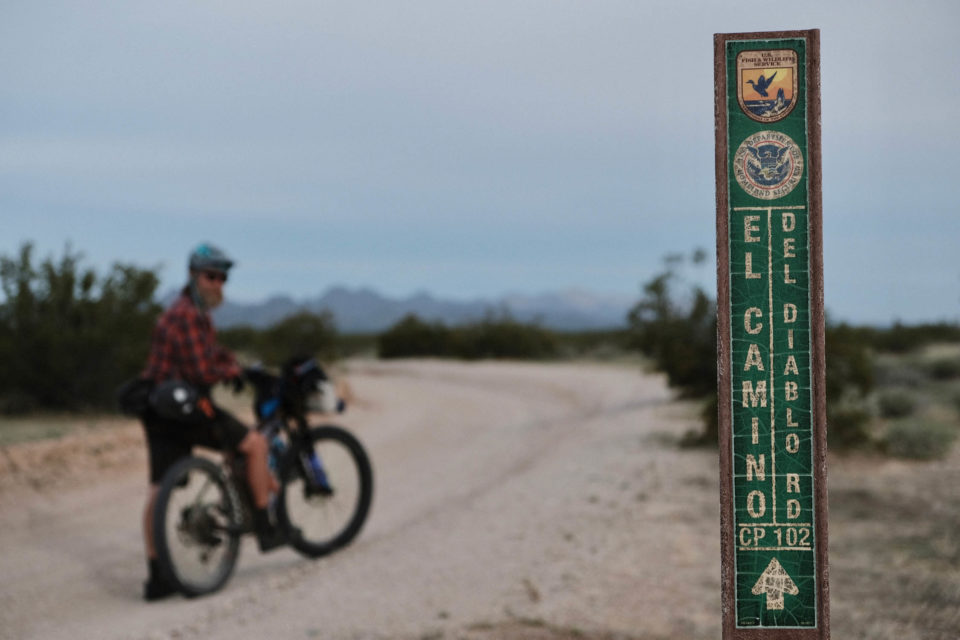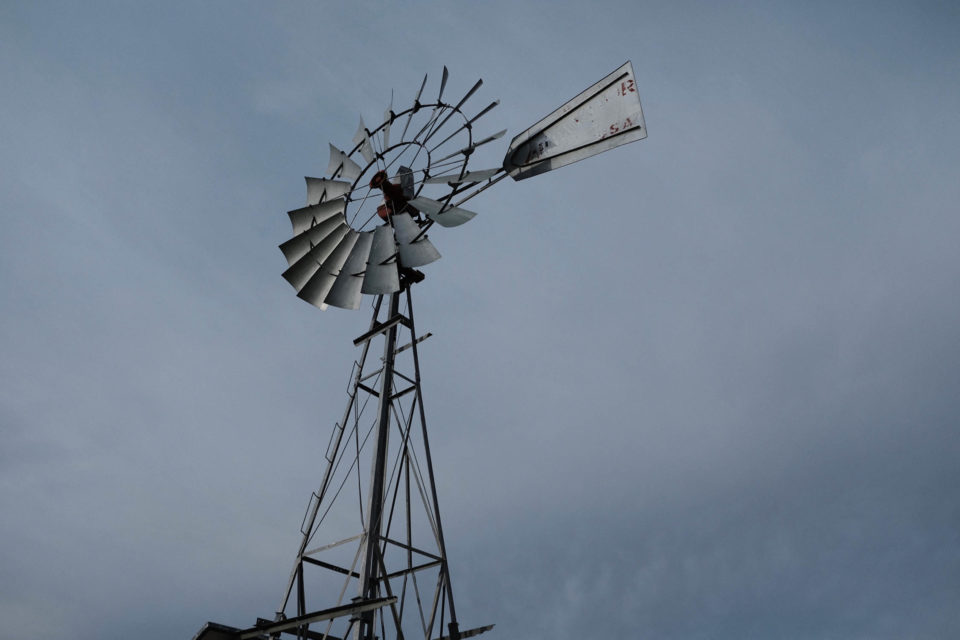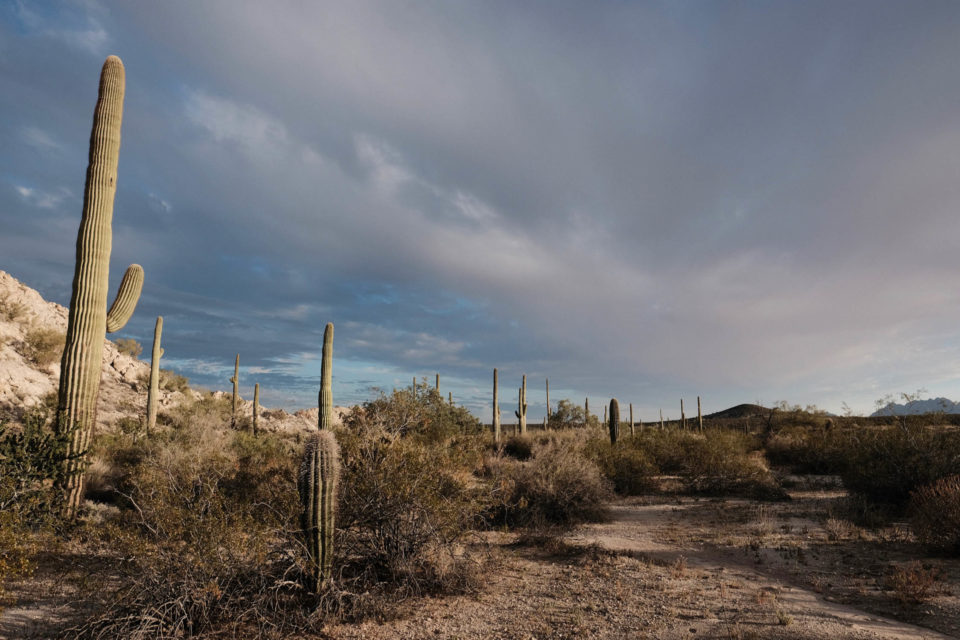Sierra Designs High Side 1 Tent Review
Joe Cruz sets out on El Camino del Diablo and beyond to test the Sierra Designs High Side 1, a relatively affordable one-person tent that claims to be lightweight, highly packable, and fully functional for backpacking and bikepacking alike. Here’s the full review…
PUBLISHED Jul 22, 2019
The ideal bikepacking tent is light, packable, affordable, and, of course, functional. Reality usually involves sacrificing one or more of these, and selecting a tent becomes less about achieving perfection and more about which of the virtues one can live without. With this inevitability of compromise in mind, I can say that I am impressed by the Sierra Designs High Side 1. It is a double wall, non free-standing tent that works well when pitched with just the inner netting or in a downpour with the fly. It’s a capable shelter that will meet the needs of a bikepacker pursuing light weight.
At 880g (31 oz), the High Side 1 hovers right around what I regard as a decent threshold for weight for a single person shelter. It packs very small, and its $280 price tag is—at least by the standards of major company offerings—somewhat reasonable. As far as functionality, well, that’s the area in which you’ll have to decide what you’re looking for in a tent.
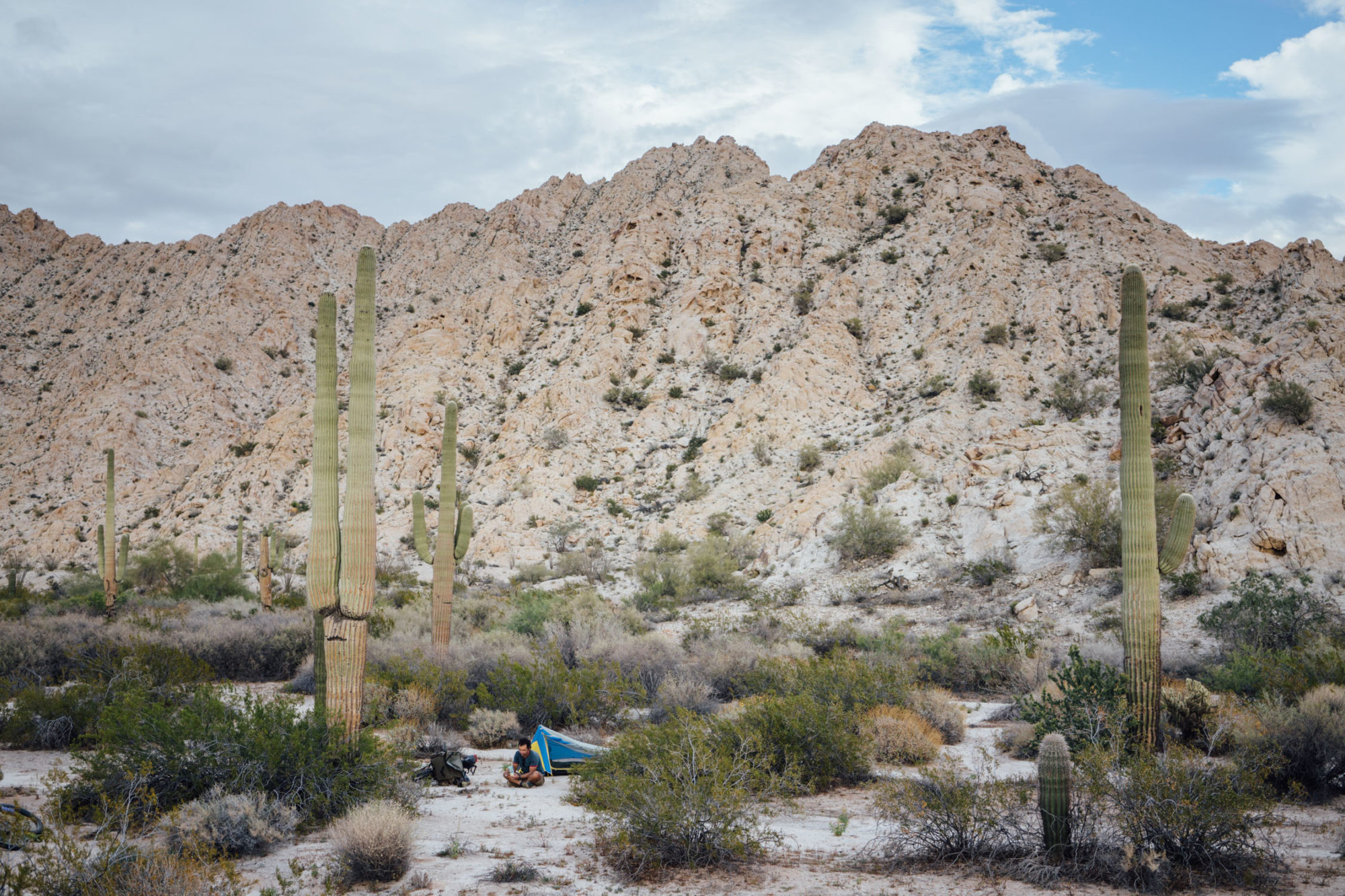
People bring diverse expectations to their nightly shelter. Some view it as an oasis and refuge, a place to get in in the evening to freshen up with wet wipes, change into a sleep outfit, and then relax with a paperback with easy access to snacks and all of one’s camping niceties. That’s a lovely and covetable scenario, but is a definite stretch for the High Side.
The High Side easily accommodates a tall sleeper through a user-friendly side door, and there’s sufficient room for propping up on an elbow and moving around. But if you want to sit up fully and spread out, or if you want to bring significant gear inside its zippered confines, the High Side is not for you. The livable space in it is plenty accommodating for a full length mattress and for a lofty quilt. That’s about it, however. Depending on your height, there will be room at the head or foot of the tent to stash a bag and your helmet. This is a shelter, then, for a different attitude, namely one where you hang out outside of the tent until just ready for sleep, then you get into your cozy sleep space expecting to drift off quickly. It’s far roomier than a bivy tent, but the essential psychology of it is the same. The High Side is a light, compact, comfortable space that’s meant for the sleeping part of the day and little else.
I got on very well with the High Side, so that’s a confession as to which side of the tent spectrum I am on. A ready comparison is with the deservedly classic Big Agnes Fly Creek HV UL1, which is arguably the gold standard one person bikepacking shelter in the USA and is comparable to the High Side in weight, pack size, and floor area (but retails for US$80 more). I’ve spent many years with the Fly Creek and have a serious affection for it. All buttoned up, the High Side feels more cramped than the Fly Creek, since the ceiling and walls are nearer one’s upper body on the High Side. In the Fly Creek, I can sit up fully, which isn’t part of the design mandate of the High Side. On the other hand, the High Side does not taper as radically down in the foot area. Moreover, the High Side has an ace up its sleeve that makes an enormous difference: side entry. It’s hard to overstate what a difference this makes. Anyone who has done the middle of the night flip-onto-your-belly, then ball yourself into a crouch, then crawl like an infant through the door of a front zip Fly Creek type tent knows what I’m talking about. It’s a pain. And it is comprehensively solved by the High Side where one entire side of the tent unzips, making entry and exit a cinch.
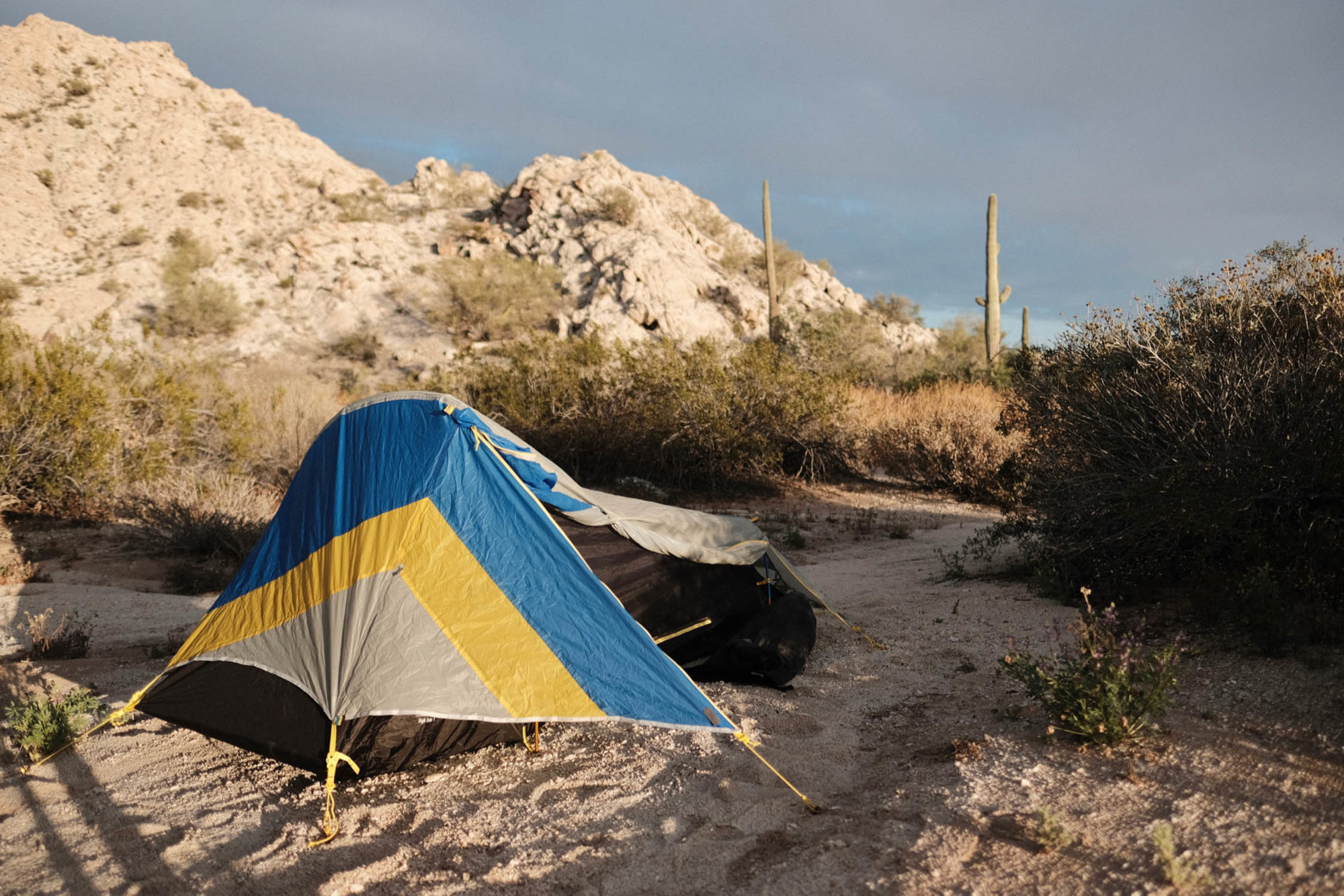
So, which is preferable, the perception of greater room with the ability to fully sit up, or easy side entry? For me, it’s one of those irrational judgments that seesaws depending on what I’m complaining about at that particular moment. In the High Side I craved just the little bit more room of the Fly Creek, while subsequently back in the Fly Creek I vigorously wished for the side door.
With so many alternative tents to choose from, it’s reasonable to wonder whether perhaps neither of the shelters I’m discussing deserves our loyalty. Broadly speaking, what keeps me coming back to tents of this format is that they’re supremely packable workhorses. The High Side is a solid offering in the category. In my view, packability is far more important that flat out lightness. This is one of the significant differences between lightweight approaches to backpacking versus bikepacking. A hiker is often able to carry a bulkier load in the accommodating space of a light backpack, sometimes strapping big items to the outside of the pack. Bikepackers, on the other hand, are typically working with oddly shaped and cramped spaces in their soft bags. The very lightest tents and tarps are made from Dyneema fabric, and the feathery scale readings of even two person dyneema shelters defies imagination (as does the price). But Dyneema does not take well to being packed very tightly in a stuff sack, since the creases will abrade and significantly shorten the lifespan of one’s pricey tent. That’s why the preferred method of packing a dyneema shelter is to roll it up and protect it in its loose bag. Sil-nylon fabric, while heavier and in other ways inferior to dyneema, can be packed very aggressively.
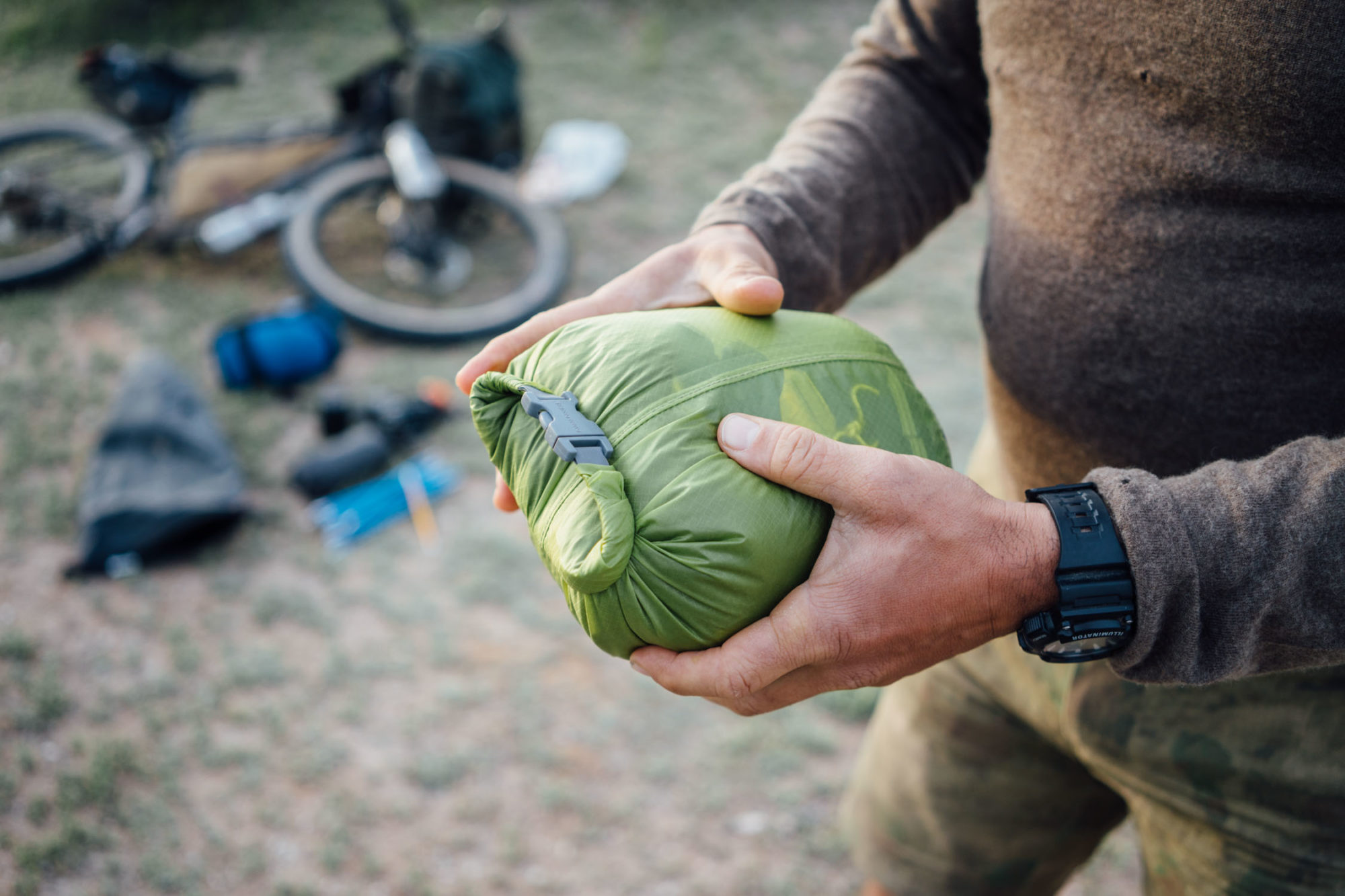
The sil-nylon used in the High Side is one of the areas where Sierra Designs saves on cost, as it is a bit thicker than that used by competitors. Thus, you get a cheaper tent that’s marginally smaller for the same weight and volume. I used the tent without a footprint and on diverse pitching surfaces. I certainly never babied it, and it’s showing hardly any wear at all after six months.
The High Side is not a free or semi-free standing tent, so staking it down is required to get it to stand at all. There was a time when I wouldn’t consider a tent that wasn’t free standing, since I don’t like having to hunt for a forgiving staking situation when I just want to go to bed. I’ve often enough, too, elected to pitch my tent inside a structure or on a porch to escape mosquitoes, and free standing is great for that. Lately I’ve softened, and have found creative ways to use sticks and rocks on the lines when stakes won’t work. If somehow all things could be equal, I’d prefer a free-stander, but things never are. Pitching the High Side is fast, dead easy, and hard to get wrong. I needed at least 10 stakes to get a taut pitch that mostly kept the fly off of the inner netting.
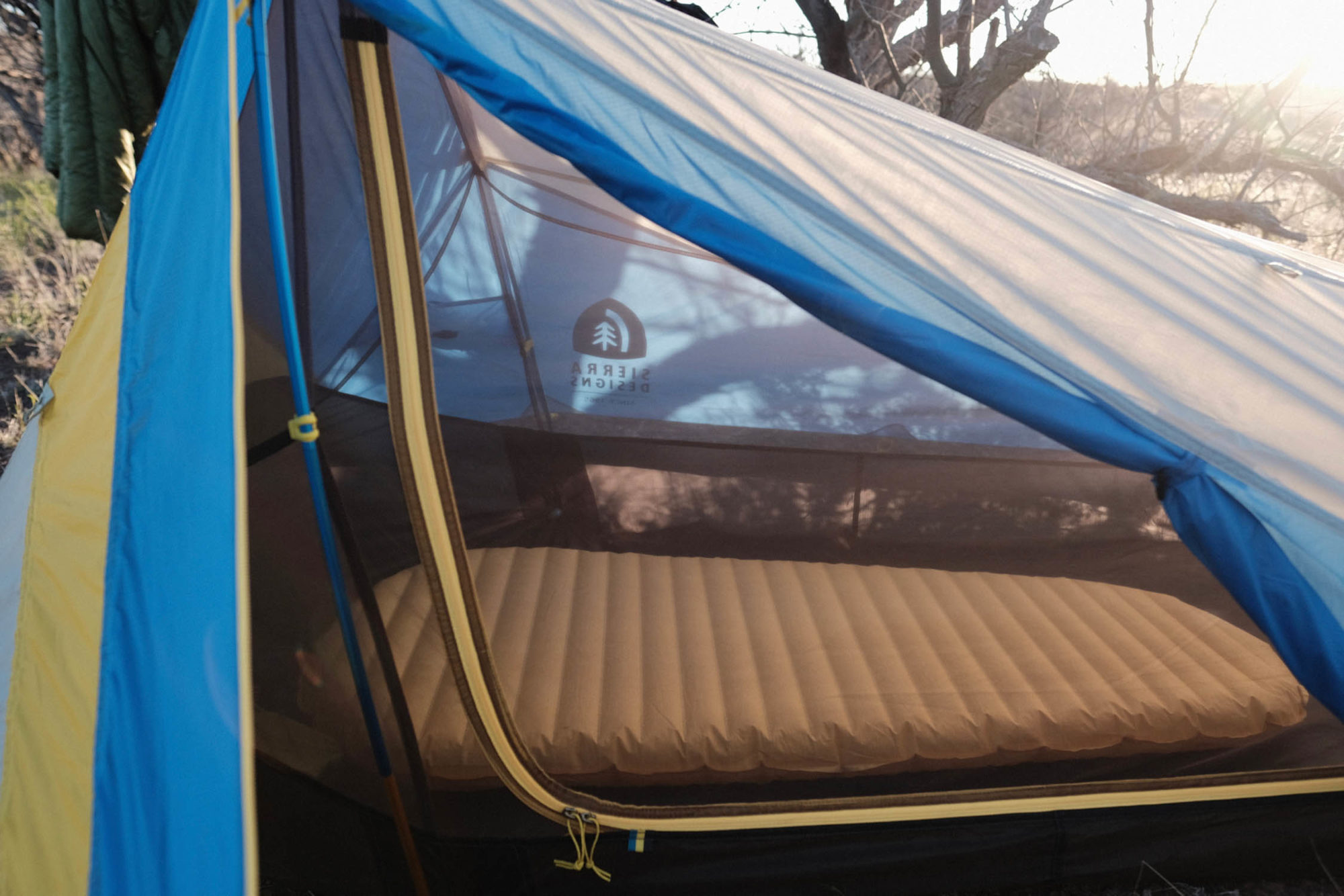
One nifty feature of the fly door is that it can be configured into several different vestibules. Unzipping the seam near the head of the tent allows for rolling up the door at an angle that will leave small vestibules at the head and foot for gear. There is a secondary zipper near the foot of the tent, and undoing that seam yields something more like a vertical shade where the whole door is rolled up and the side mesh lets in loads of fresh air. Or there is the fun awning mode, where the two open zippers allow one to create a shaded porch with the side fabric as a roof. This would work best with hiking poles, but a bikepacker could find a branch for the tall side and maybe the handlebars of a bike on its side on the short side. Additional touches include velcro stiffeners to lift open vents. I didn’t find the condensation that collected on the inside of the fly an issue, but neither was it non-existent. It was about average for this kind of tent.
The two arch poles fold down to a nice, packable bikepacking-friendly length (12.5”/32cm). They are pre-bent to give the tent an asymmetrical roof shape, namely a little taller on the entry side. I appreciated that architectural commitment, but it does mean that when the poles are folded into their bundles they take up more volume that straight pole sections would. But I’m being nitpicky. With one long pole and one quite short pole, the poles are easily hidden away.
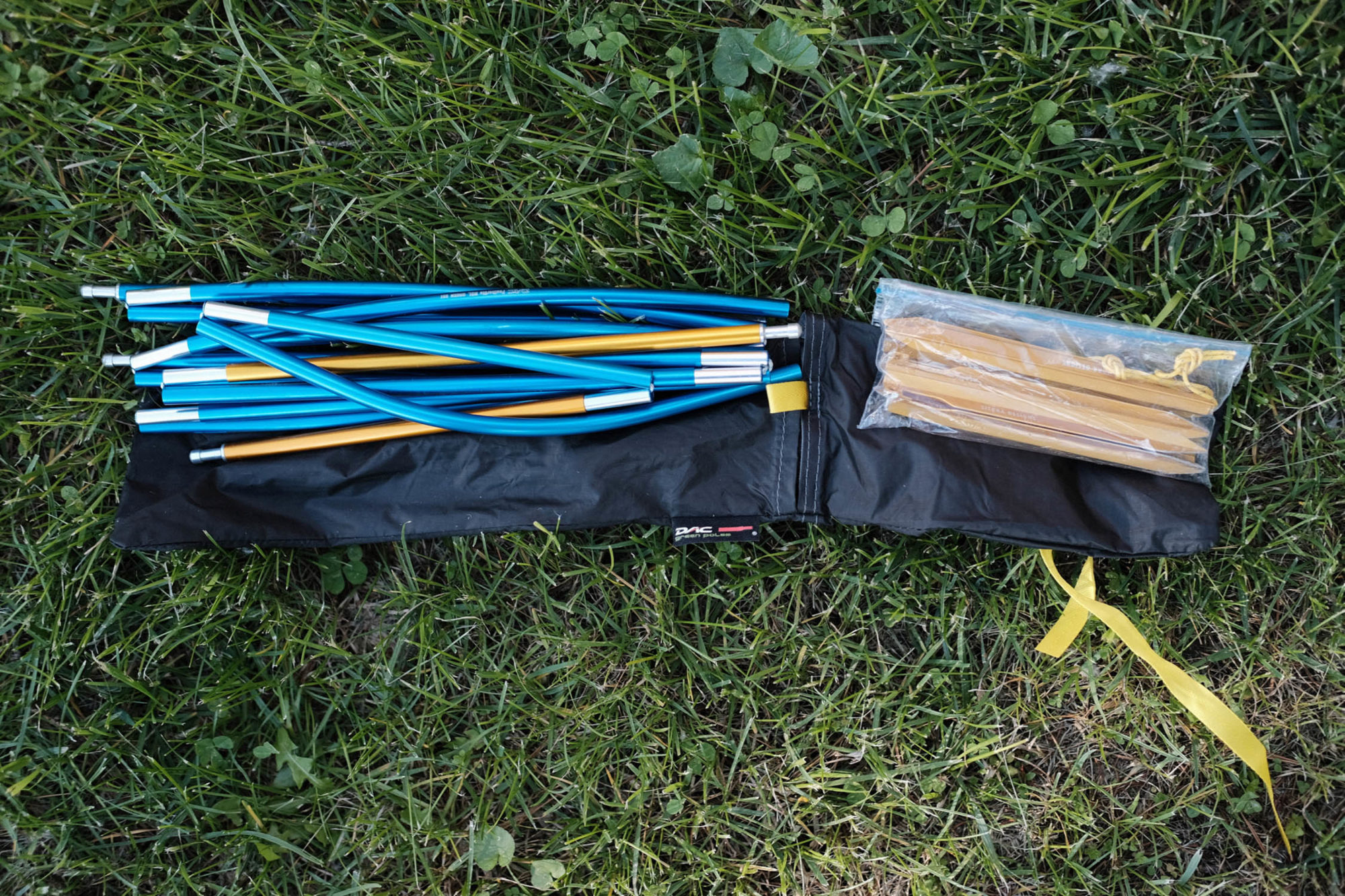
The stuff pouch that the High Side 1 comes with is nicely designed, as it opens on the side and has a pair of straps to compress the bundle. Still, it’s heavy and doesn’t allow me to get the tent into a shape that I can economically place in the front roll or saddle bag. I prefer a tiny 4L roll top sack to stuff my sil-nylon tent and fly in, and I pack the poles and stakes separately.
- Sleeps: 1
- Seasons: 3
- Weight: 0.88kg (31 oz)
- Vestibule Area: 7.7 ft2 / 0.72 m2
- Floor Area: 17.2 ft2 / 1.60 m2
- Peak Height: 32″ (81cm)
- Price: $280 USD
- Manufacture: China
- Manufacturer’s details: sierradesigns.com
Pros
- Packable to the size of a cantaloupe
- Short pole segments for easy packing
- Tolerably light
- Multiple vestibule configurations, including a massive awning
- Can pitch the inner body only
- Medium priced
Cons
- Not roomy enough to sit up in
- Not free-standing
- Requires 10 pegs for a confident pitch
- Fly sits a little close to the netting at head and foot so condensation can be a slight issue there
- Fly zipper caught on the fabric more than is typical
Wrap Up
The Sierra Designs High Side 1 achieves a very nice balance between all of the things one would want in a bikepacking tent. The bias is certainly toward size and packability over living space, but it’s an enormous step up in comfort and usability over a bivy shelter. Don’t expect the High Side to serve as a comfortable hanging out tent. While there is volume for sitting up and shifting about, but this is not a tent to drag all of your things into. With creative zipper and door configurations, innovative pole bends, and a price point that’s enough below competitors to notice, the High Side 1 deserves a good look.
Sierra Designs sent us a High Side 1 for review.
Please keep the conversation civil, constructive, and inclusive, or your comment will be removed.







